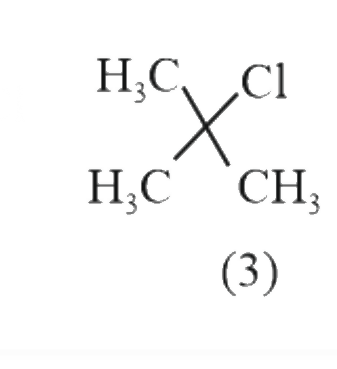PH3 can be formed in
hydrolysis of calcium phosphide
heating H3PO3
reaction of P4 & NaOH in inert atmosphere
All
The correct Answer is:D
To determine how phosphine (PH₃) can be formed, we will analyze three different reactions provided in the question.
1. Identify the reactions: We have three reactions to analyze for the formation of phosphine (PH₃).
2. First Reaction - Hydrolysis of Calcium Phosphide:
- Reaction: Ca₃P₂ + 6H₂O → 3Ca(OH)₂ + 2PH₃
- Analysis: In this reaction, calcium phosphide reacts with water to produce calcium hydroxide and phosphine.
- Conclusion: This reaction produces PH₃, so it is a valid method for forming phosphine.
3. Second Reaction - Heating Phosphorous Acid (H₃PO₃):
- Reaction: 4H₃PO₃ → H₃PO₄ + 3PH₃
- Analysis: When phosphorous acid is heated, it decomposes to form phosphoric acid and phosphine.
- Conclusion: This reaction also produces PH₃, making it another valid method for forming phosphine.
4. Third Reaction - Reaction of P₄ with NaOH in Inert Atmosphere:
- Reaction: P₄ + 4NaOH + 2H₂O → 4NaH₂PO₂ + 2PH₃
- Analysis: In this reaction, tetraphosphorus reacts with sodium hydroxide and water in an inert atmosphere to produce sodium hypophosphite and phosphine.
- Conclusion: This reaction also produces PH₃, confirming that it is a valid method for forming phosphine.
5. Final Conclusion: Since all three reactions lead to the formation of phosphine (PH₃), we conclude that phosphine can be formed from all the provided reactions.
- Reaction: Ca₃P₂ + 6H₂O → 3Ca(OH)₂ + 2PH₃
- Analysis: In this reaction, calcium phosphide reacts with water to produce calcium hydroxide and phosphine.
- Conclusion: This reaction produces PH₃, so it is a valid method for forming phosphine.
- Reaction: 4H₃PO₃ → H₃PO₄ + 3PH₃
- Analysis: When phosphorous acid is heated, it decomposes to form phosphoric acid and phosphine.
- Conclusion: This reaction also produces PH₃, making it another valid method for forming phosphine.
- Reaction: P₄ + 4NaOH + 2H₂O → 4NaH₂PO₂ + 2PH₃
- Analysis: In this reaction, tetraphosphorus reacts with sodium hydroxide and water in an inert atmosphere to produce sodium hypophosphite and phosphine.
- Conclusion: This reaction also produces PH₃, confirming that it is a valid method for forming phosphine.
Topper's Solved these Questions
- CHEMISTRY AT A GLANCEBook:ALLENChapter:CHEMISTRY AT A GLANCEExercise:ORGANIC CHEMISTRY
Explore 472 Videos
- CHEMISTRY AT A GLANCEBook:ALLENChapter:CHEMISTRY AT A GLANCEExercise:ORGANIC CHEMISTRY
Explore 472 Videos
- Chemical EquilibriumBook:ALLENChapter:Chemical EquilibriumExercise:All Questions
Explore 30 Videos
- ELECTROCHEMISTRYBook:ALLENChapter:ELECTROCHEMISTRYExercise:EXERCISE -05 [B]
Explore 38 Videos
Similar Questions
Knowledge Check
PhCOOH and Ph−CH3 can be separated by :
ANaHCO3Baq.NaHCO3+n -HexaneCH2ODn-hexane
The number of numbers divisible by 3 that can be formed by four different even digits, is
View SolutionHow many 7 digit numbers can be formed with the digits 2,3,0,3,4,4,3?
View SolutionFind the number of numbers, greater than a million, that can be formed with the digits 2,3,0,3,4,2,3.
View SolutionHow many numbers greater than 100000 can be formed with the digits 3,3,4,0,3,4 ?
View SolutionThe compounds [PtBr2(NH3)2] can form .
View SolutionPH3 forms bubbles when passed slowly in water but NH3 dissolves. Explain why?
View SolutionStatement-1 : PH3 and PF3 are pyramidal in shape with one lone pair on P . But PF3 has greatest bond angle than PH3.
and
Statement-2 : Back bonding is present in PF3 but absent in PH3.
View Solution

